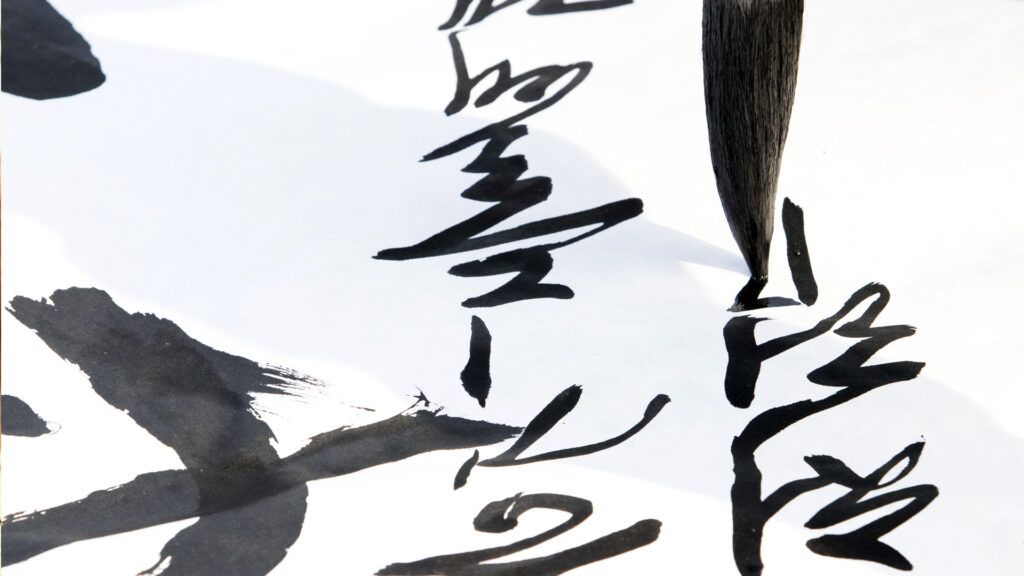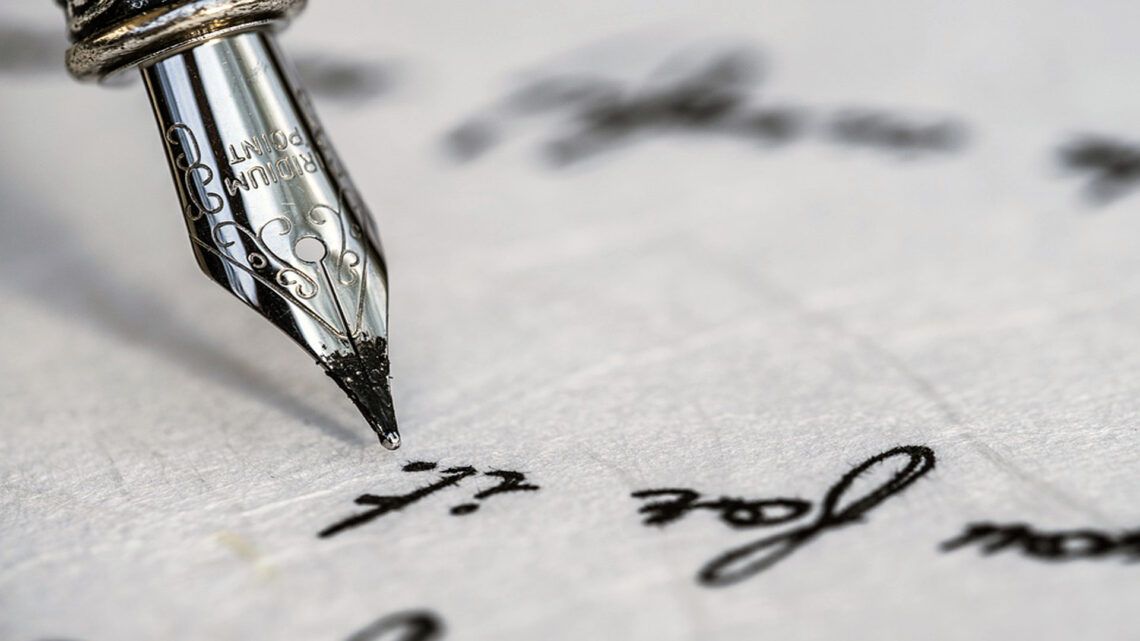
Zen and calligraphy are closely connected and often find a common expression in Japanese culture. Both Zen and calligraphy emphasize the importance of mindfulness, concentration, and the present moment.
In Zen philosophy, mindfulness is at the core. It involves consciously experiencing the present moment and being fully present in the here and now. This mindfulness is also reflected in calligraphy. When writing calligraphy, it is important to execute each stroke consciously and feel the flow of the brush on the paper. It is about enjoying the moment and placing the right stroke with full attention.
Concentration plays a crucial role in both Zen and calligraphy. Both practices require high concentration to achieve the desired expression. When writing calligraphy, each stroke must be placed with care and precision to achieve the desired result. This focus of the mind allows the artist to enter a state of immersion and flow.
Zen, calligraphy and the principles of imperfection
Both Zen and calligraphy emphasize the beauty of imperfection and the appreciation of the moment. In Zen aesthetics, beauty is found in simplicity and naturalness. This is also reflected in calligraphy, where the aim is to capture the moment and bring the essence of what is to be expressed onto the paper with the brush. Mistakes are not seen as defects but as part of the process and an expression of the uniqueness of a work.
Furthermore, the practice of calligraphy itself can become a meditative experience. When writing calligraphy, the artist can immerse themselves in a state of calm and stillness. A harmonious flow is created between the mind, brush, and paper, which can lead to self-reflection and inner strengthening.
Overall, Zen and calligraphy complement each other in various ways. Both practices promote mindfulness, concentration, and immersion in the present moment. By combining Zen and calligraphy, artists can create a space of inner calm and balance and expand their creative possibilities for expression.
Zen and calligraphy have a deep and intertwined relationship, particularly within Japanese culture. They both emphasize the significance of mindfulness, concentration, and being fully present in the current moment.
Calligraphy and mindfulness
In Zen philosophy, mindfulness takes center stage. It involves consciously experiencing and fully inhabiting the present moment. This mindfulness is reflected in the art of calligraphy as well. When practicing calligraphy, it is crucial to execute each stroke mindfully, feeling the flow of the brush on the paper. The focus is on savoring the moment and placing each stroke with complete attention.
Concentration plays a vital role in both Zen and calligraphy. Both practices demand a high level of concentration to achieve the desired expression. When engaging in calligraphy, every stroke must be carefully and precisely placed to attain the intended outcome. This mental focus allows the artist to enter a state of absorption and flow.
Zen and calligraphy both emphasize the beauty of imperfection and the appreciation of the present moment. In Zen aesthetics, beauty is found in simplicity and naturalness. This sentiment carries over to calligraphy, where the objective is to capture the essence of what is being expressed and translate it onto paper through brushwork. Mistakes are not seen as flaws but rather as an integral part of the process, representing the uniqueness of each work.
Calligraphy and practices
Moreover, the practice of calligraphy can be a meditative experience in itself. When engaged in calligraphy, the artist can immerse themselves in a state of tranquility and stillness. A harmonious connection is formed between the mind, brush, and paper, fostering self-reflection and inner strength.
Overall, Zen and calligraphy complement each other in profound ways. Both disciplines cultivate mindfulness, concentration, and a deep connection to the present moment. By intertwining Zen philosophy with the art of calligraphy, artists can create an inner sanctuary of serenity and equilibrium, expanding their creative expression.



